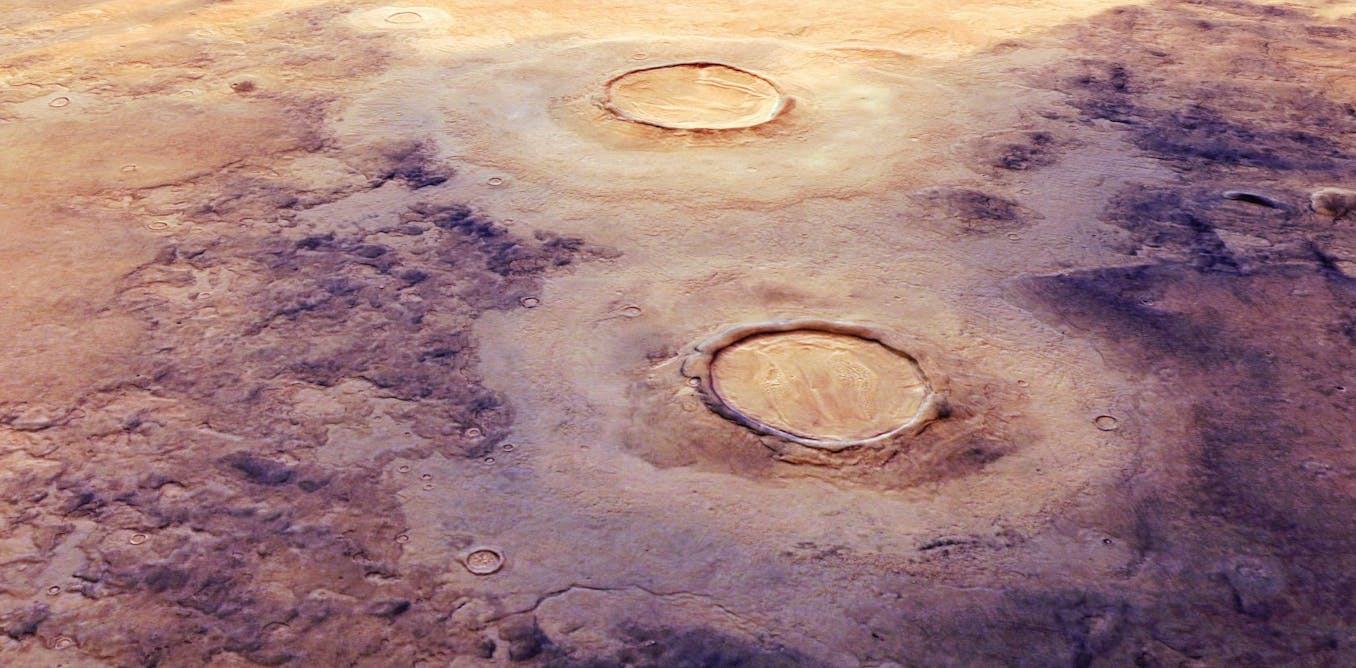
In the 1970s, the NASA Mariner 9 orbiter unveiled water-carved landscapes on Mars, resolving the longstanding debate about the existence of water on the red planet.
Since that time, a growing body of evidence has surfaced indicating that water significantly influenced Mars’ geological history.
For instance, Martian meteorites provide clues about water dating back 4.5 billion years. On more recent timelines, impact craters observed in recent years suggest the presence of ice beneath the surface.
Current discussions revolve around the timing of water’s appearance on Mars, its volume, and its duration. A particularly intriguing question being explored is whether ancient oceans ever existed on the planet.
A recent study published in the Proceedings of the National Academy of Sciences has stirred considerable interest. This research, led by Jianhui Li from Guangzhou University in China, utilized data from the China National Space Administration’s Mars rover, Zhurong.
Insights from Zhurong have shed light on rocks located near a potentially ancient shoreline, and the research team claims to have discovered beach deposits from a long-lost Martian ocean.
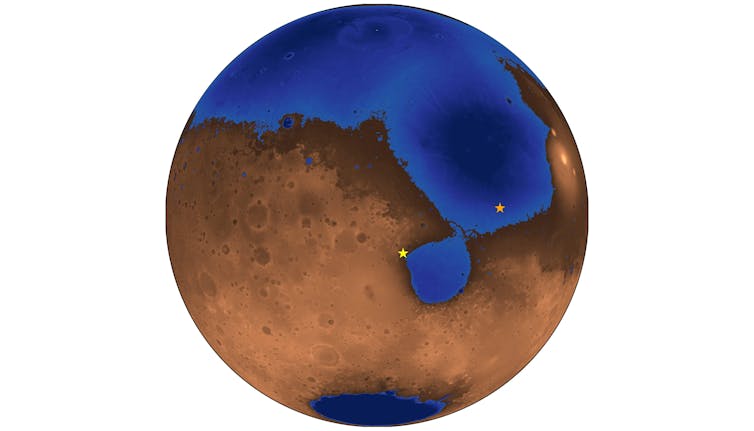
Robert Citron/Southwest Research Institute/NASA
Oceans on a Crimson Planet
Mars rovers are tasked with probing the red planet’s many features, including its geology, soil composition, and atmosphere, continuously seeking signs of water. This pursuit is fundamental in assessing the potential for past life on Mars.
Research often concentrates on sedimentary rocks, believed to offer vital insights into Mars’ watery past—and possible origins of life on the planet.
Currently, the NASA Perseverance rover is exploring a delta deposit, a triangular landform typically located where rivers intersect with larger bodies of water, leading to significant sediment accumulation. Earthly examples include the Mississippi and Nile deltas.
The delta that Perseverance is investigating lies within the Jezero impact crater, spanning roughly 45 kilometers, and is thought to be the site of an ancient lake.
Meanwhile, Zhurong has been focused on what remains of a primordial ocean situated in Mars’ northern hemisphere.

ESA/DLR/FU Berlin
The Fire God
The Zhurong rover derives its name from a legendary fire deity.
Launched by the Chinese National Space Administration in 2020, Zhurong operated on Mars from 2021 to 2022, landing in the Utopia Planitia—one of the most expansive impact basins on the planet, stretching approximately 3,300 kilometers.
It specifically examined an area adjacent to ancient ridges, dubbed paleoshorelines, which have been interpreted as potential remnants of a global ocean that may have enveloped Mars’ northern regions.
Nevertheless, scientific opinions vary regarding this interpretation, and additional investigations are warranted.
On Earth, geological evidence of ancient oceans is quite distinct. While our current oceans are a mere few hundred million years old, the global geological record is filled with data from much older oceans, some dating back billions of years.
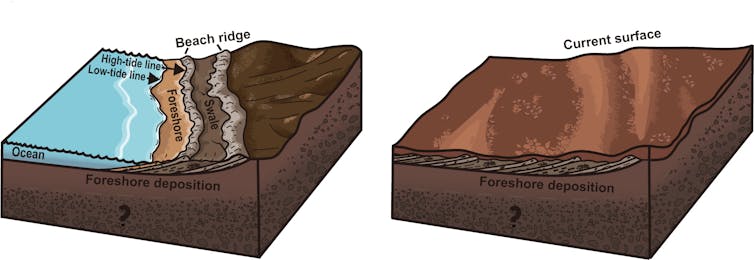
Hai Liu/Guangzhou University
Secrets Beneath the Surface
To understand if the rocks in Utopia Planitia could have originated from an ocean, the rover analyzed a 1.3-kilometer transect at the basin’s edge, aligned perpendicular to the paleoshoreline. This investigation aimed to identify the rock types present and the narratives they conveyed.
Zhurong employed a method known as ground-penetrating radar, which penetrated up to 100 meters below the surface. The findings revealed various characteristics about the subsurface rocks, including their orientations.
The rocks analyzed along the transect displayed multiple reflective layers visible through ground-penetrating radar, extending down to at least 30 meters. These strata exhibit a gentle dip towards the basin, away from the paleoshoreline, mirroring how sediment is typically layered in terrestrial ocean settings.
Additionally, the radar measured the rocks’ response to electrical fields, indicating that they are predominantly sedimentary in nature, as opposed to volcanic formations.
The assessment compared data from Zhurong in Utopia Planitia with findings from ground-penetrating radar studies of diverse sedimentary environments on Earth.
The results are compelling—the rocks identified by Zhurong align with coastal deposits typically found along oceanic margins.
Indeed, Zhurong has uncovered evidence of a beach.
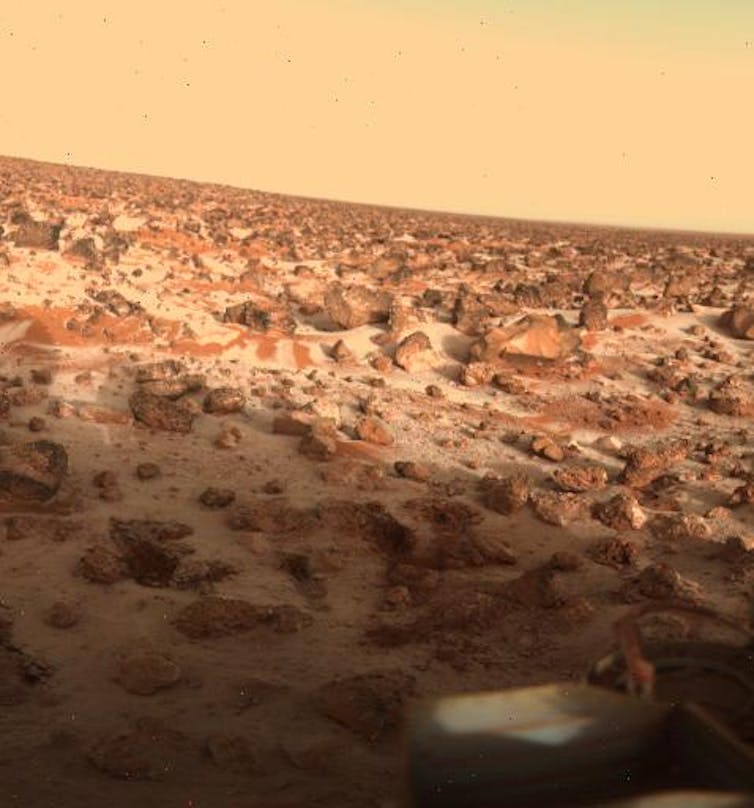
NASA/JPL
A Wet Mars
The Noachian era of Martian history, spanning from 4.1 to 3.7 billion years ago, illustrates a time when Mars was rich in water. Numerous orbital observations of valley networks and mineral compositions indicate that the Noachian period featured significant surface water.
Conversely, the Hesperian period, ranging from 3.7 to 3 billion years ago, shows less evidence of standing water. Remarkable orbital images of extensive outflow channels, including the Kasei Valles canyons, likely resulted from sudden releases of groundwater rather than from large, stable bodies of water.
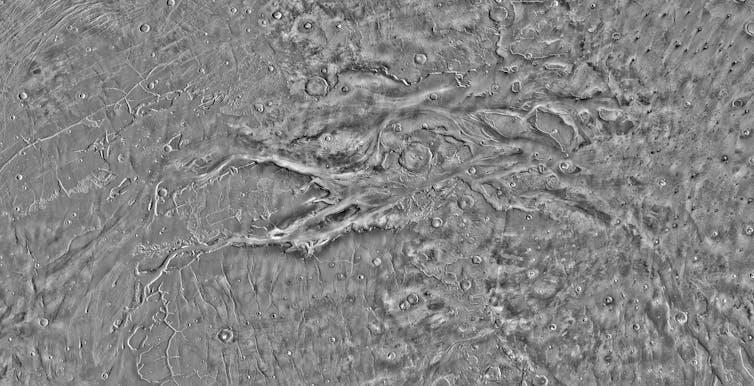
By NASA / JPL-Caltech / Arizona State University
From this perspective, it appears Mars cooled and desiccated during the Hesperian epoch.
However, the Zhurong rover’s discovery of coastal deposits attributed to an ancient ocean could suggest that stable surface water existed on Mars longer than previously assumed, possibly extending into the Late Hesperian period.
This revelation implies that habitable conditions near an ocean may have persisted into more recent geological times.









